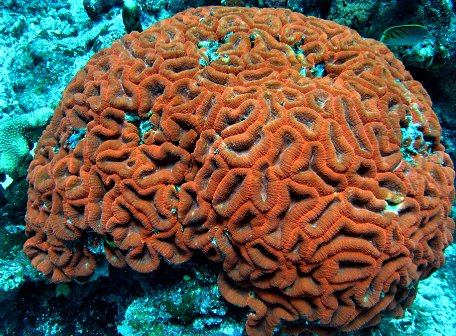I went snorkeling yesterday with ohana at Two-Step (just beyond the rocks bordering Keone'ele Cove at the north of Pu'uhonua o Honaunau, the old City of Refuge in south Kona district). This spot has some of the best coral formations easily accessible from the shorelines of the Big Island.
 The 'Alakuma (Carpilius maculatus) has many common names: spotted reef crab, or the seven-eleven crab from numberings of its spotted markings. From the Hawaiian just-so story of the crab wounding the grasping fingers of a sea-god, it's also been called the bloody finger crab, with its bloodred spots as the god's fingerprints. Some of the locals here claim it can be poisonous to eat, perhaps from its diet of occasionally poisonous cone snails?
The 'Alakuma (Carpilius maculatus) has many common names: spotted reef crab, or the seven-eleven crab from numberings of its spotted markings. From the Hawaiian just-so story of the crab wounding the grasping fingers of a sea-god, it's also been called the bloody finger crab, with its bloodred spots as the god's fingerprints. Some of the locals here claim it can be poisonous to eat, perhaps from its diet of occasionally poisonous cone snails?


The state fish of Hawaii is the Humuhumunukunukuapuaʻa (Rhinecanthus rectangulus), a reef triggerfish with a mouthful of a name.







